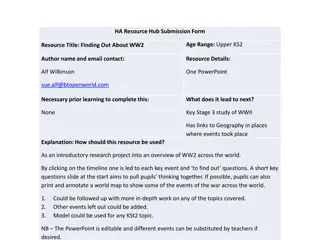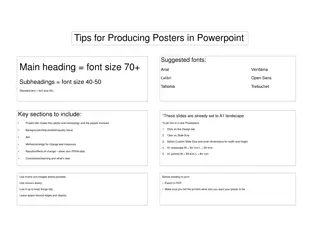
Occupational Hazards and Biological Risks in the Workplace
Learn about occupational hazards and the different types of risks workers face, including biological, chemical, physical, and psychosocial hazards. Explore how the COVID-19 pandemic has highlighted the importance of workplace safety, with a focus on combating biological hazards like the coronavirus.
Download Presentation

Please find below an Image/Link to download the presentation.
The content on the website is provided AS IS for your information and personal use only. It may not be sold, licensed, or shared on other websites without obtaining consent from the author. If you encounter any issues during the download, it is possible that the publisher has removed the file from their server.
You are allowed to download the files provided on this website for personal or commercial use, subject to the condition that they are used lawfully. All files are the property of their respective owners.
The content on the website is provided AS IS for your information and personal use only. It may not be sold, licensed, or shared on other websites without obtaining consent from the author.
E N D
Presentation Transcript
NAME: ASITA OBONISO DEPARTMENT: MECHATRONICS ENGINEERING MATRICULATION NUMBER: 17/ENG06/014 DATE: 2NDOF APRIL 2020
Occupational hazards are risks accepted as consequences of a particular occupation. Occupational hazards can also be seen as illnesses or accidents in the workplace. In other words, hazards are those negative events that workers experience in their place of work or they are unpleasant things that a person experiences or suffers as a result of doing his/her job. Some dictionaries say that the term also includes hazards that people experience as a result of working on their hobbies. If a hazard is an undesirable, unpleasant event or danger then Occupational Hazards can mean the risks of a job.
Biological hazards Chemical hazards Physical hazards Psychosocial hazards
Biological hazards: Biological hazards or biohazards are biological substances that threaten the health of human beings and other living organisms. Chemical hazards: Chemical hazards are occupational hazards that expose people to chemicals in their workplace. Physical hazards: Physical hazards may be factors, agents, or circumstances that can cause harm without or with contact. Psychosocial hazards: Psychosocial hazards are occupational hazards that affect employees psychological health.
Coronavirus is a biological hazard and can be contacted at the work place. This is the main reason why people are asked to work from home. COVID-19 is an infectious disease caused by severe acute respiratory syndrome. The disease was first identified in December 2019 in Wuhan, the capital of China s Hubei province, and has since spread globally, resulting in the on going 2019-20 coronavirus pandemic. Common symptoms include fever, cough and shortness of breath. Other symptoms may include fatigue, muscle pain, diarrhoea, sore throat, loss of smell and abdominal pain. While the majority of cases result in mild symptoms, some progress to viral pneumonia and multi- organ failure. As of 8 April 2020, more than 1.44 million cases have been reported in more than 200 countries and territories, resulting in more than 82,900 deaths. More than 307,000 people have recovered
A PICTURE OF A CORONA VIRUS RESPIRATORY DROPLETS, PRODUCED WHEN A MAN IS SNEEZING
Design and manufacture respiratory equipment Provide personal protective equipment (PPE) Build temporary hospitals or donate materials
Thermometer gun Thermal infrared cameras Wearable monitoring temperature device
A new laser-based bimodal waveguide interferometer sensor detects coronavirus via changes in the sensor's evanescent light field.
sensors that can be operated at home like through phone applications should be created to detect the virus from the house to avoid the spread also smaller and cheaper ventilators should be created to help the masses of corona virus patients so that the need for building temporary hospitals would not arise or would be at a minimal rate.
Occupational hazards are risks accepted as consequences of a particular occupation. There several types of occupational hazards but in this document it was more focused on biological hazard because coronavirus 2019 otherwise known as COVID-19 is a biological hazard. COVID-19 is an infectious disease caused by severe acute respiratory syndrome. The disease was first identified in December 2019 in Wuhan, the capital of China s Hubei province, and has since spread globally, resulting in the on going 2019-20 coronavirus pandemic. It can be spread through many ways that s why social distancing has been encouraged in order to stop the spread of the disease. The engineering industries are being encouraged to gear up and innovate as it tackles COVID-19. They can design, fabricate and manufacture equipment and facilities to help in curbing the virus.






















